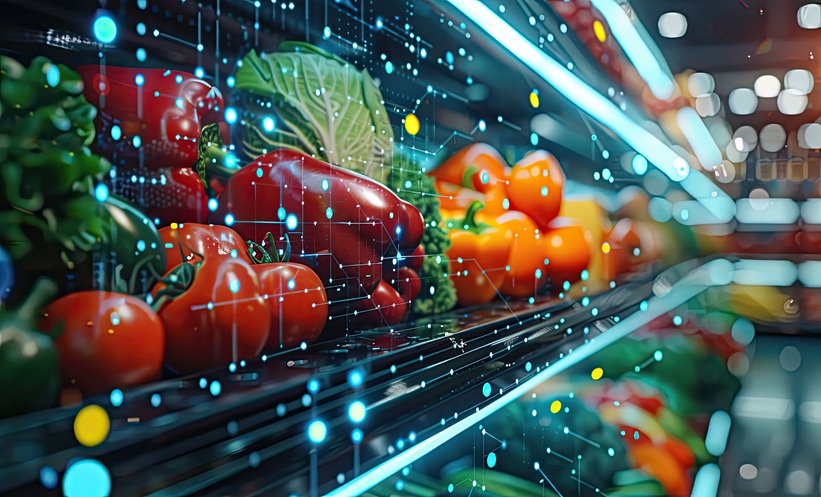Written by Louise Rogers | Content and Editorial Assistant, European Medical Group
![]()
Roses are red, violets are blue. It’s the month of February and with Valentine’s Day a heartbeat away, we can’t help but all feel a little more love for each other here at EMJ (if that’s even possible!). A celebration of warmth and love is juxtaposed by the cold February days; however, the origins of Valentine’s Day are in fact not so cheery, and the legend of Saint Valentine often supersedes the facts. Popular belief is that Saint Valentine was a Roman priest in third-century AD who performed illegal marriages in secret. When emperor Claudius discovered this, Valentine was sentenced to death. During his imprisonment, he fell in love with the jailer’s daughter and, on the night before his execution, sent her a card signed ‘From your Valentine’.1
In 1993, Haddaway asked the world: “What is Love”, and I’m not sure he ever really got his answer. In 2012 we were evidently still unsure, with it being the most searched phrase on Google that year. Scientists, ranging from neuroscientists to anthropologists, have questioned the biology behind love, creating incalculable different definitions and answers. Is love the jigsaw puzzle that we may never complete? Love is a universal concept relative to the affinity between humans and over time has been portrayed through many mediums, such as art, philosophy, and religion. In terms of science, however, love is chemistry; more specifically, love is a significant number of chemical reactions and neuronal firings in combination with essential hormone release, and there is no place for sentimentality! So, like chemistry, if we follow the right protocol and add the right ingredients, can we divide the process of love into steps and create it? Dr Helen Fisher explained how the act of falling in love can be split into three phases.2 So, let’s get chemical.
Lust, or desire, is the first stage of falling in love, driven by initial physical attraction and referred to by W.H. Auden as: “an intolerable neural itch”. Love at first sight? More like the release of testosterone, oestrogen, and pheromones. You’re not in love, you’re in lust. The evolutionary basis for lust stems from our need to reproduce and pass on our genes, and it subsequently evolved to encourage individuals to seek union with an appropriate partner. But what about love at first smell? Scientists in Bern, Switzerland,3 showed how love really is in the air when they asked women to smell the unwashed t-shirts from a number of different men. Blood samples were taken from both the men and women to analyse the immune system regulatory genes. The results showed that the women preferred the smell of men whose immune systems were different from their own, with this thought to be due to the subconscious intent of boosting their offspring’s immune systems. Opposites really do attract!
Attraction follows shortly after and, although a distinct phenomenon, has regular interaction with lust. While we can certainly lust for someone we are attracted to, lust and attraction can occur independently of each other. In the context of humans, lust is often referred to as passionate or obsessive love. However, romantic attraction to someone is associated with a high activity of the mesolimbic dopamine system, otherwise known as the reward pathway, causing an individual to feel sensations of pleasure and reinforcement, motivating us to continue certain activities. A release of noradrenaline, alongside dopamine, gives individuals energetic and euphoric feelings, and can lead to decreased appetite and insomnia. These brain activities can also explain reasons for addiction to recreational drugs, confirming it is possible to be high on love. The increase in the release of these neurotransmitters is accompanied by a decrease in levels of serotonin; low levels of serotonin are also found in people with obsessive compulsive disorder, which explains why love can cause us to feel anxious and can cause people to experience ‘temporary insanity’ in the beginning stages of love.4
Attachment is fundamental to a long-lasting relationship and, while lust and attraction are pretty much exclusive to romantic experiences, it is what enables us to form friendships and a parent–infant bond. In the animal kingdom, creatures such as penguins stay with their partners for life, even when it comes to raising their offspring in a harsh environment, sharing with us the EMJ value of loyalty. This leads us to introducing the two stars in the play of love: oxytocin and vasopressin. Oxytocin is responsible for trust and the pleasant feeling we experience when caressed or cuddled. It is also the hormone that triggers the muscular contractions required to give birth, compelling women to feel unconditional love for their newborn. Vasopressin plays a larger role in males, where it maintains blood pressure and increases the fear and stress response thought to induce partner bonding. It is suggested that this phenomenon originates from prehistoric parent–child bonding, where the mother cared for the child and the father protected his family from danger.5
This all being said, hormones only provide part of the answer, and the chemistry within us is only the tip of the iceberg to explaining the chemistry between us. Love can be channelled in many different ways and to people who play all kinds of roles in our day-to-day lives. In Finland, ‘Valentine’s Day’ translates to ‘Friends Day’ and celebrates all the people who make someone’s life a little better each day, similar to how we want to celebrate the day here at EMJ. One of our Editorial Assistants, Mark Wilkes, celebrates his birthday on Valentine’s Day, making it an even more special day in our office. So even though we may still be puzzled as to what love actually is, what we do know, and put so eloquently by Oscar Wilde, is that: “the consciousness of loving and being loved brings a warmth and richness to life that nothing else can bring.”
References
- History. History of Valentine’s Day. Available at: http://www.history.com/topics/valentines-day/history-of-valentines-day. Last accessed: 19 January 2018.
- Fisher HE. Lust, attraction, and attachment in mammalian reproduction. Human Nature. 1997;9(1):23-52.
- Wedekind C et al. MHC-dependent mate preferences in humans. Proc Biol Sci. 1995;260(1359):245-9.
- Fisher HE. Lust, attraction, attachment: Biology and evolution of three primary emotion systems for mating, reproduction, and parenting. J Sex Educ Ther. 2000;25(1):96-104.
- de Boer A et al. Love is more than just a kiss: A neurobiological perspective on love and affection. Neuroscience. 2012;201:114-24.








